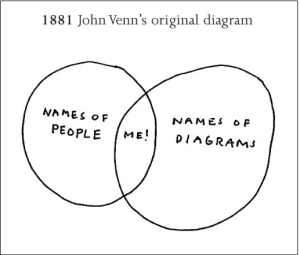In my previous post, I defined prioritization as knowing what to say yes to.
Have you noticed that the things in life you really want to do often don’t have time pressure attached? For example, I want to write a book. Without a deadline, I risk never getting writing it because I’m always doing whatever is next required. The temptation in getting things done turns into starting with whatever task is due first. But whilst I understand the decision, it is faulty logic. By organising ourselves in this manner, all we are doing is reacting to time pressures to avoid missing deadlines. We are merely focusing on whatever is urgent, therefore making everything urgent as we prioritize activities based on time. Someone once described this mode of living as ‘the tyranny of the urgent.’
Ultimately, everything you say ‘yes’ to means you are saying ‘no’ to something else.
 “Alison’s indecision was very embarrassing”
“Alison’s indecision was very embarrassing”
Therefore, we need to understand there is a difference between what is urgent, and what is important.
Let’s define some terms. If something has a deadline, then it is an ‘urgent’ task – irrespective of how far away that deadline is. An ‘important’ task is something that will bring your personal dreams and goals one step closer to happening. Think about your to-do list. Some of your tasks are urgent, some important, some both and some neither. When we think of tasks in these terms, and not just from a time mindset, we Immediately have a sense of prioritization.
Now, here is the kicker: if you do not live with your personal dreams and goals at the forefront of your life, you will be unable to determine what is important, and will drift towards the vacuum of the urgent. We will be reactive, instead of proactive. Without knowing your own priorities, you run the risk of living life according to everyone else’s priorities, instead of your own.
This means that successful time management is impossible without a personal vision.
 “Rebecca spent time getting
“Rebecca spent time getting
a new vision for her life”
A first step I’d encourage you to take is to make a dream list. Take a piece of paper, and write four headings. They are ‘I want to be’; ‘I want to do’; ‘I want to have’; and ‘I want to go.’ Then let yourself dream big! Write as many as you can! Don’t hold back!
Then for each dream, think of one thing you could do that would bring that dream closer to reality. It might be save money. Finding out certain information. Or talking to a specific person. It doesn’t matter – you’ve begun to form a list of important actions! Add these to your existing tasks. Lots eh?! Don’t worry, we are now going to look at an example of a system that can help us.
Visually, I find the Eisenhower Matrix the most effective for helping me keep track of my tasks and how I’ve categorised them. It is a system that automatically prioritises and is easy to update and reference throughout the day, whether you use it on pen and paper or electronically.
Each task I find myself considering, I simply ask myself two questions:
Firstly, is it important? Will doing this help me achieve my dreams? It’s either a yes or a no! It also doesn’t matter if it is important to someone else. Prioritising means sometimes saying no!
Secondly, is it urgent? Is there a time-deadline? Again, it is a yes or no. Sometimes, things have become urgent because we’ve procrastinated. Interestingly, this can be also true for what other people consider urgent and are wanting you to help them with!
Success depends on spending our time more on things of importance, then things of urgency.
 The very first Venn diagram
The very first Venn diagram
Therefore, after allocating my tasks to the respective quadrant, I would focus on the top half – the important tasks – first. Out of these, I would complete the urgent tasks first.
When I have completed or diarised the tasks in quadrant 1, then I would do the same with quadrant 2. Only when these two quadrants are completed would I move to the bottom half of the grid, which are the unimportant things. Starting with the urgent first, I would compete quadrant 3 then 4, bearing in mind that if new tasks come to my attention that are important, I would go back to earlier quadrants because of my new-found prioritization skills. Remember, quadrants 1 and 2 are where dreams are made!
To summarise, I would suggest the following:
-
Prioritization as knowing what to say ‘yes’ to.
-
Everything we say ‘yes’ to means we are saying ‘no’ to something else.
-
There is a difference between what is important, and what is urgent.
-
Successful time management is impossible without a personal vision.
-
Success depends on spending our time more on things of importance, then things of urgency.
I understand this isn’t an exact science, but as a principle it is very effective. My next two posts will look at personal boundaries and planning, and how they are related to time management.












Look carefully then how you walk, not as unwise but as wise, making the best use of the time, because the days are evil. Therefore do not be foolish, but understand what the will of the Lord is. – Ephesians 5:15-17
Comments are closed.